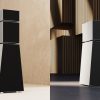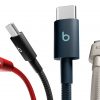Helm Audio are a prime example of a personal audio company that really understand the landscape; they were also very generous with their donation of a Bolt DAC/AMP and Helm Audio DB12 AAAMP Mobile Headphone Amplifier for us to give away at T.H.E. Show in Long Beach.
The company is a relative newcomer to the category; the principals have all worked for other companies within the high-end audio industry but the brand was founded in 2017.
Helm’s ethos since launch has been to offer affordable high-end portable components that consumers can actually afford; the first series of products have included a pair of IEMs, Helm Bolt Dongle DAC, and the focus of this review — the Helm Audio DB12 THX Amplifier. The DB12 was the first THX certified portable headphone amplifier on the market.

EIC Ian White has previously reviewed the Helm Bolt and his thoughts on this rather special Dongle DAC can be found here.
This review will have some overlap with the Bolt review as the two are designed to pair together. The Bolt is a very small THX certified Dongle DAC designed to feed the Helm Audio DB12 amplifier so there is some overlap in any discussion about one or the other.
The Helm Audio DB12 is only an amplifier so you will need a dongle DAC to make it work with smartphones without a headphone jack; Helm wisely chose to use a 3.5mm jack to offer broad compatibility.

Helm Audio DB12
The DB12 uses THX AAA amplifier technology and is also THX certified; products designated “Powered by THX” use the THX amplifier circuitry. Products that are THX certified have to pass a rigorous series of tests to ensure the sound quality is up to THX standards.
You can learn more about the THX certification process here.
The internals of the DB12 contain a lithium ion battery, THX amplifier board, and the support circuitry for the bass boost which is not a part of the default THX circuit design.
The THX circuit uses their award winning Achromatic Audio Amplifier (AAA); Helm Audio are rather tight-lipped about which exact model they utilize in the design and only refer to it as a “customized” AAA Vanguard.

A quick check of specifications for the DB12 compared to the published THX documentation suggests that the chip may have been the parent of the newer Frontier line designed for portable use because the THX-AAA-28 and 38 chips have very similar specifications.
The DB12 gets its name from its +12 dB fixed gain and is capable of delivering just over 100mW into 32 ohms (measured per channel). The SNR is 114 dB, 300 ohms, <1% THD.
This makes the DB12 a rather capable amplifier for most high sensitivity headphones and even more difficult headphones like the HiFiMAN HE400, Sennheiser HD6xx, and AKG K612.
The DB12 does get warm during use and the battery life was dependent on the headphone and volume level that I selected; I managed to squeeze an average of 5-6 hours out of the battery using medium sensitivity headphones and closer to 8 hours if I used IEMs or headphones in the 16 to 32 ohms range.
Hey Ridley, Got any Beeman’s?

The bass boost on the other hand is completely independent of the source device and adds +6 dB to the area between about 50 and 100Hz; I’ve never really been a fan of bass boost circuits because I think they cover too wide of a range and the bass often bleeds over into the lower midrange. The DB12, unfortunately, suffers from the same issue.
I’d much prefer the boost being limited to +3 dB and a bit lower in the range; the DB12’s bass boost circuit is not as effective as the one built into the iFi Audio headphone amplifiers but it is still better than average and I can see how some users might want to use it depending on the type of music.

Sound
The DB12 is a very different beast with the bass boost disabled; the overall neutrality of the sonic signature works better with the Bolt and other Dongle DACs that are either too neutral or overly warm sounding.
The THX amplifiers tend to have a very clean, slightly cool signature with good detail and dynamics; the DB12 follows that pattern with a slightly thin and cool sound with plenty of detail and range. When you engage the bass boost, the midrange does benefit from some added warmth but the overall emphasis that pushes the low end too much does not get my vote.
With the bass boost off, the midrange becomes the focus, so you would be forgiven for thinking that the midrange was pushed slightly forward on first listen. The reality is that the amplifier is more linear sounding than most and with the “V” signature having become the norm, a signature where the midrange is not slightly recessed comes across as being slightly forward.
The treble is well extended and has good energy but again is not accentuated and doesn’t leap out. There is no stridency or sibilance to the sound, but it can get mildly fatiguing during long listening sessions.
Overall, the DB12 performed quite well although I did find that when I used a headphone that was a bit too much for the DB12, the very top end of the volume range does start to come apart a little bit. At the bottom end, we have some channel imbalance and the top end we have a bit of distortion that creeps in. Between the two extremes though, the DB12 does a good job.

Helm Audio Bolt
The Bolt does not use the THX Achromatic Audio Amplifier circuitry that many automatically associate with THX certification; Helm chose to go with an ESS DAC/Soc for the Bolt but they will not disclose which version of the chip has been implemented.
Interestingly, the Bolt handles 24-bit/96 kHz PCM as its maximum, but will unfold MQA all the way up to 384kHz, so while the packaging touts the little DAC as 32-bit/384kHz capable, know that you have to use MQA to approach that limit.
The Bolt is impedance sensing and will adjust output accordingly with headphones and IEMs below 150 ohms triggering low power mode with a 1V output and higher impedance models setting the device to a 2V output.
Recent tests of output power on ASR and Head-fi have shown the output to be roughly 60mW at 32 ohms and 15mW with a 300 ohms load. This is roughly comparable to the AudioQuest Dragonfly Black, Earman Eagle or Sparrow, Hiby FC3, or ddHiFi TC35i dongles.
Helm Audio also notes that the USB section of the Bolt is physically isolated from the DAC section to help reduce noise related to communications and power delivery.

Externally, the Bolt is a small box shaped dongle with a 5cm cable and USB Type-C connector. The kit comes with a USB Type-C to Type-A adapter and a storage bag but no lightning adapter so either the camera connection kit or our recommended ddHiFi TC28i lightning to USB Type-C adapter will be needed for Apple devices.
The unit does have a single LED light on the case that displays blue for 44.1 or 48kHz PCM, Red for 88 or 96kHz PCM and purple with MQA tracks. It does not offer any distinctions between MQA bit-rates.
Setup is easy enough, plug a headphone into the 3.5mm jack and then plug the dongle into your source. Every Android, iOS, and Windows product I tested with discovered the Bolt and away we went. It was not detected when I tried Raspberry Pi OS or in some flavors of Linux so be aware of that possibility.
I’m a DAP guy primarily and not a huge user of TIDAL; Qobuz and my personal server are what I use for almost all reviews but I needed to treat the Bolt differently to make an accurate assessment.

Reviewing a USB Type-C Dongle DAC that offers MQA playback capabilities required a smartphone and the TIDAL app; I listened using an iPhone 12 and a Samsung S21 with local files, TIDAL, and Qobuz on each and did my testing using the UE Live IEM, and Meze Audio 99 Classic and Campfire Cascade headphones.
For such a small unit, the Bolt had zero difficulty driving any of the headphones I tried; I would use my choices as a benchmark in terms of what worked well.
I would avoid the big current hungry planar magnetic headphones but they really are not the best choice with any phone powered dongle.
If you do want to drive headphones beyond what the Bolt can do, the DB12 offers more power while retaining the THX certification.
The bolt provided a very clean sound with good detail and little or no coloration added. The ESS chips are often a little on the cool and analytical side and the Bolt is pretty true to that form as it doesn’t impart any additional warmth or weight to the sound.
Those looking for something with a bit more weight or warmth may want to look at Earmen’s Sparrow or Eagle which trade some of the resolution of the Bolt for a bit more warmth and thickness. The Bolt will please those looking for a reference design that delivers a lot of transparency and detail.

Conclusion
The $99 Helm Bolt is one of the least expensive Dongle DACs currently available and one of the most impressive as well; MQA detractors will boo and hiss but that doesn’t take away from the reality that this is an excellent product for those who listen to both TIDAL and Qobuz and want a super portable product that is very well made. I do wish that it shipped with a removable cable for Apple users; consumers dislike having to add an adapter to their setup and I know that often means something that weighs more than the Dongle DAC itself.
The Bolt makes a compelling argument even if you need the adapter for your iPhone because its size, power, and great clarity combined with THX and MQA certifications make it a near perfect travel companion.
The Helm DB12 is quite an interesting amplifier. It and the THX Onyx are about the only two ultra-portable THX implementations in wide circulation. The DB12 is bulkier than the Onyx but with it being strictly an amplifier, it’s also the more versatile piece.
The $129.99 asking price is very reasonable and the DB12/Bolt combination can be had for about $230 — which is far less than the DragonFly Cobalt and just a little more than the THX Onyx.
Two very solid products that have sold me on their value in the category and overall performance.
Where to buy:
- Helm DB12 – $129.99 at Amazon | $154.99 at Amazon.ca | £149.99 at Amazon.co.uk
- Helm Bolt DAC – $99 at Amazon | $129.99 at Amazon.ca | £99.99 at Amazon.co.uk
































